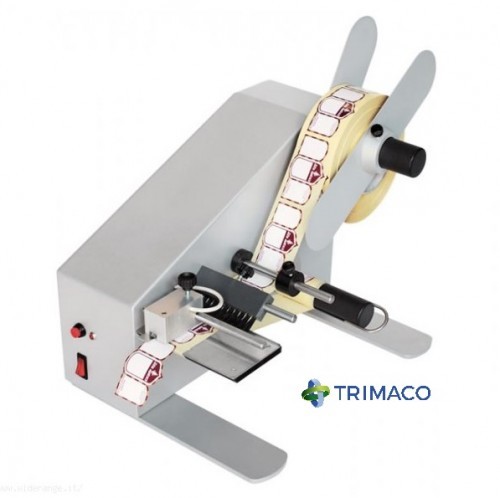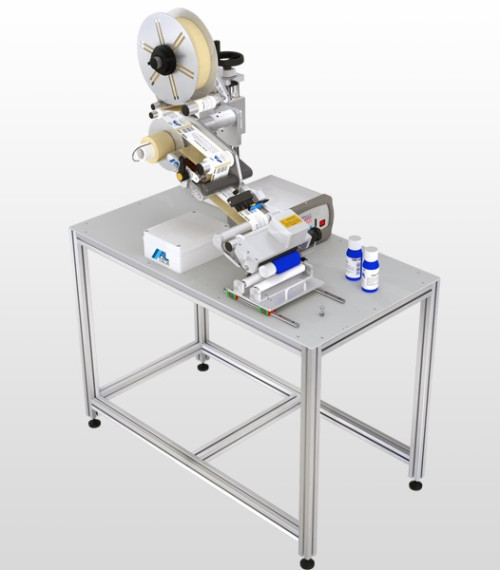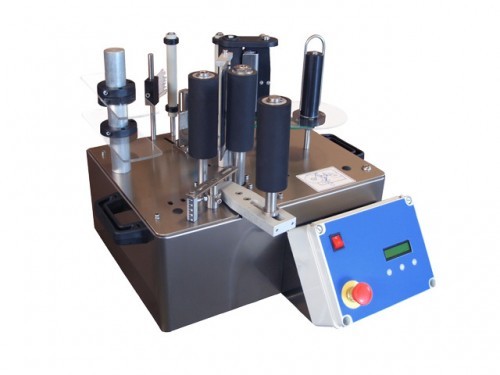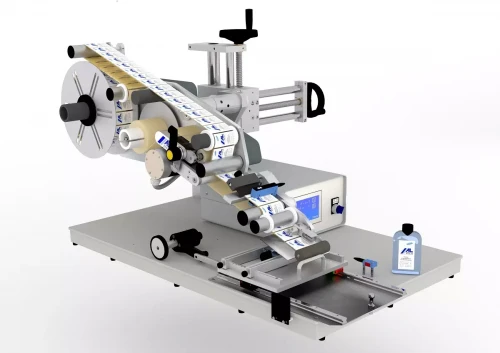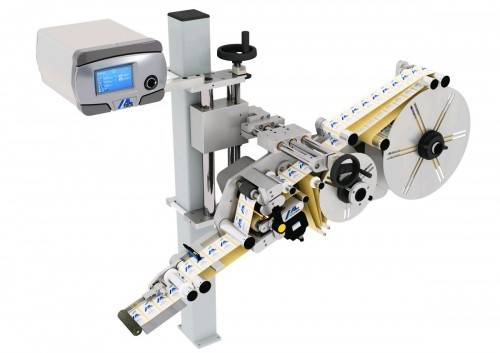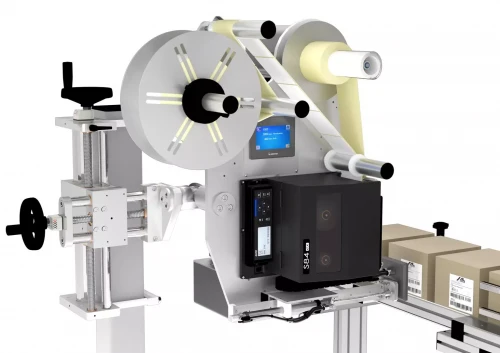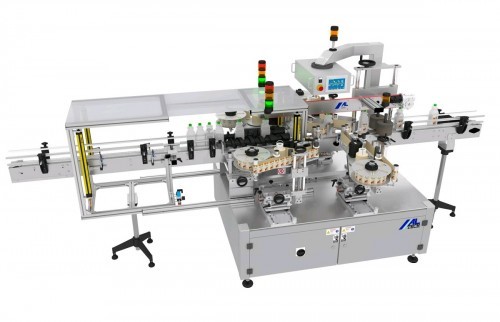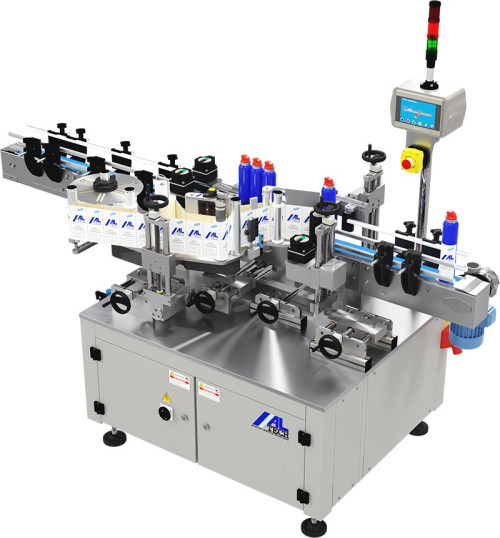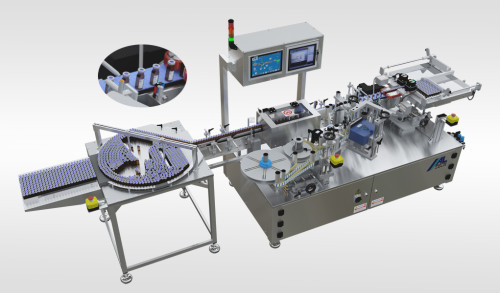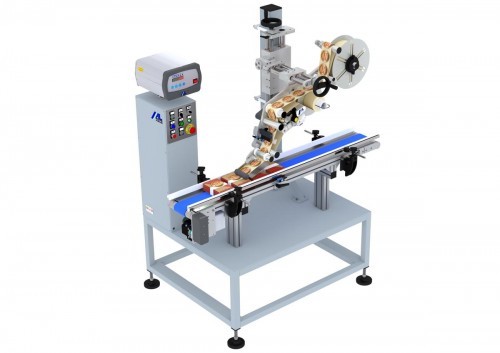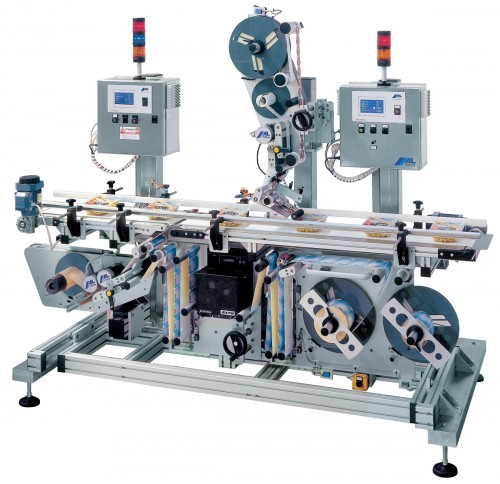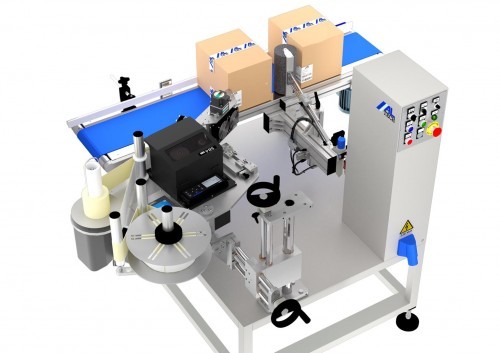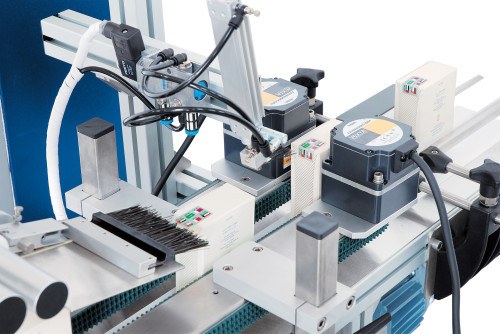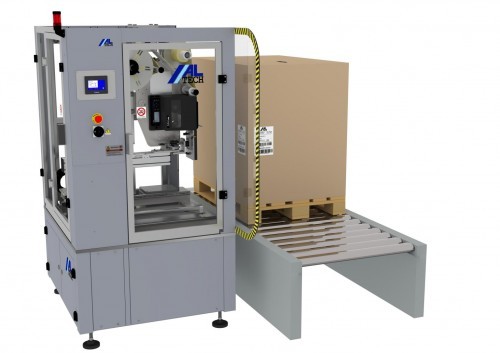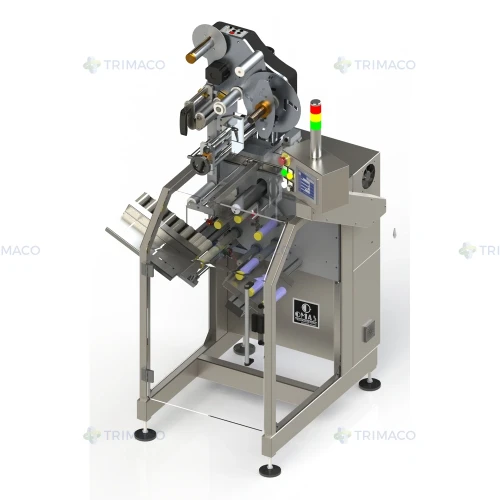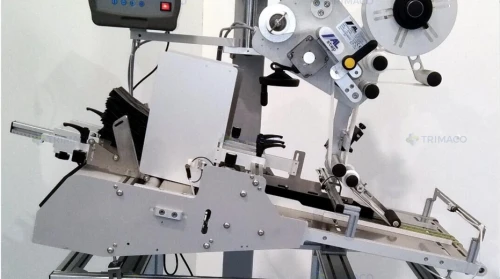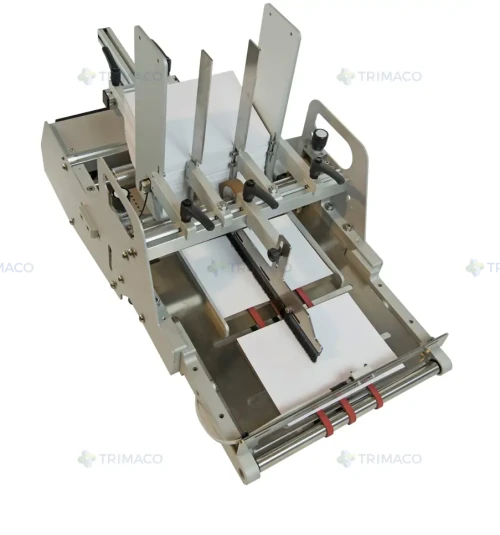Label applicators and Labelling machines
Labellers and labelling machines for self-adhesive labels
Labellers and labelling machines are used to label products. A labeller usually consists of the following five assemblies: Label dispensing head, unwind reel, dispensing edge, label sensor and product sensor or light barrier. Self-adhesive labels sitting on a backing paper are detached from the backing paper by being deflected 180° around a dispensing edge and stuck onto the passing product. Self-adhesive labels or self-adhesive labels are a multi-layer material composite, which in the simplest version consists of the actual label, an adhesive layer, a silicone layer and the backing paper.
What is labelling? To mark a product, e.g. a bottle or a food package, with a label by means of a labeller.
Why is labelling actually done? To clearly identify a relevant product, be it with the product name, expiry date, batch number, ingredients and code, etc. Labels are an inexpensive way of identifying products and are easy to apply.
Labelling systems:
Label dispensers
Hand-held labellers for small series, for manual label provision. With these ALpeel dispensers, the labels are peeled off manually, removed manually and stuck onto the product by hand.
Semi-automatic labeller
Semi-automatic labellers feed and remove the product manually. No transport system for the individual products is provided for this purpose. The labelling process is triggered by means of a foot switch or movement by an operator
Labellers
Labellers form the heart of a labeller or are also integrated individually into the packaging process. They are used to transport the label web to the peel-off edge, where the labels are peeled off the backing paper. The remaining backing paper is then wound up. The drive for transporting the backing paper is located in the labeller's base unit. The labellers are available in different widths, speeds and installation forms, depending on the customer's requirements.
Label print dispenser
The label is first fed through the printer and printed accordingly with the desired information. This is usually variable data, such as the expiry date, batch number or ingredients of a product. The printed label is then applied to the respective product and pressed on. There are two different types of printing and dispensing systems. There is the "one-to-one" system, where the label is printed in real time and applied immediately. The second system is batch-constant printing, where the label is printed independently of its application, so that printing and application occur simultaneously.
Labelling machines
Labelling systems or labelling machines are complete solutions for labelling products. A labeller comprises the separation and feeding of the product to the labelling station. There, the labeller is used for the actual labelling process. The labelled product is then transported on to the next machine or for manual removal.
Pallet labeller
Pallet labelling in continuous operation or at a standstill and on up to three sides, the corresponding logistics labels can be applied. The label is first printed with the relevant data and then applied immediately.
Labelling types:
- Round labelling
- Side labelling (one or two-sided)
- Bottom labelling
- Top labelling
- Top and bottom labelling
- L-labelling (closure labelling)
- U labelling
- Print & dispense system
Labelling application (examples):
- Bottle labelling: wrap-around or front/rear
- Tamper-evident labelling of folding boxes
- Labelling machines for vial or ampoule labelling
- Labelling thermoformed trays and packages with top and bottom labels
- Labelling bottles and canisters on both sides
- Label canisters, chemical bottles and cartons over-corner
- Pallet labeller for logistics labels

